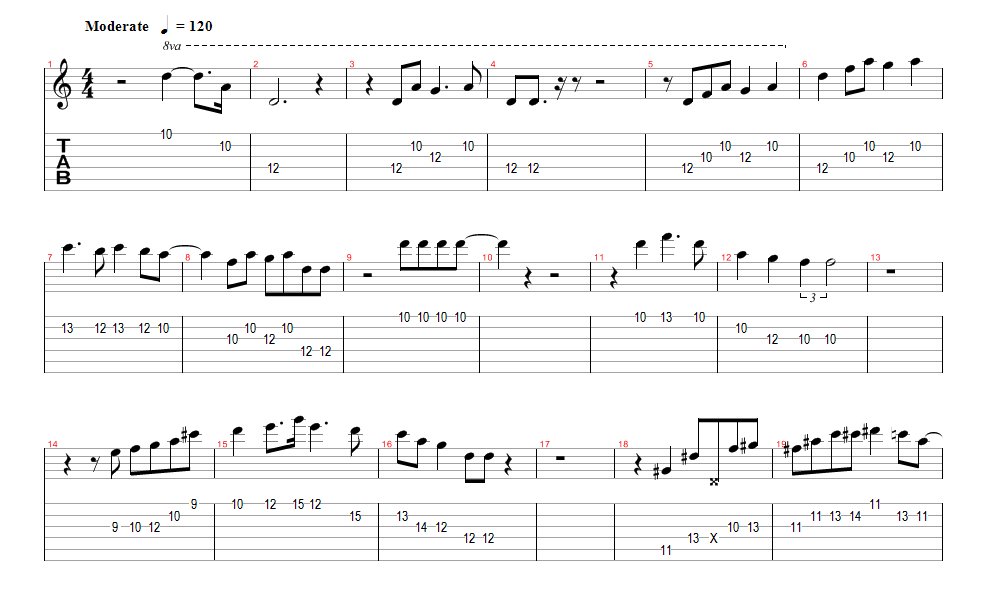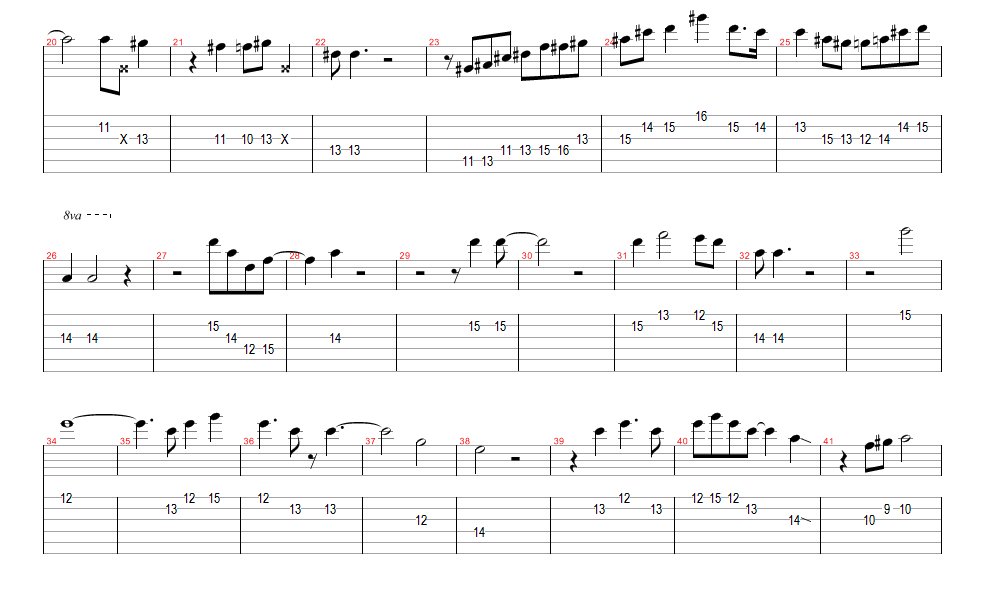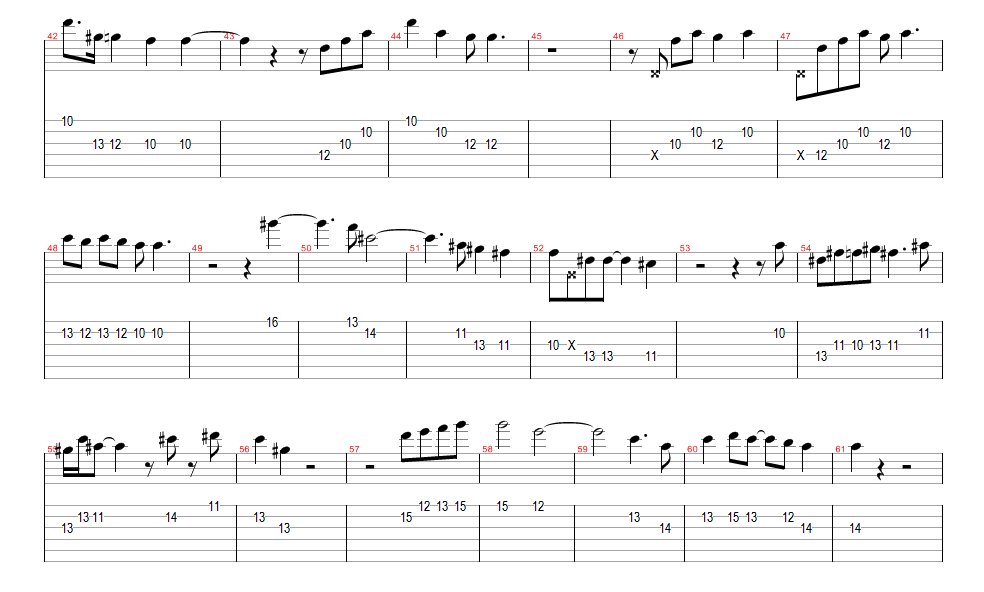Lesson 01: ‘So What’
The first song I want to study is the first song from the most important Jazz album ever: “So What” from the Miles Davis’ album “Kind of Blue”. If you have never heard of this album, rush to your local record store now or go to i-tunes and buy it!
The “Kind of Blue” album is famous for it’s ‘modal tune’ songs.
Wikipedia says about modal tunes: In modal jazz, with its lack of conventional bop chord changes, the soloist can create interest by exploring the particular mode in rhythmically and melodically varied ways. Modal jazz is, in a sense, a return to melody.
Or, in modal tunes the emphasis is not on the melody or the chord changes, it’s all about soloing on a relatively simple chord pattern.
Only the best musicians know how to solo on a simple chord progression without becoming boring. In our case, since the ‘ So What’ song is quite simple, it’s the best to start off learning to solo. Throughout your jazz studying career, you will always return to this song to apply new licks, scales, arpeggios etc.
For interpretations of this song, have a look at:
The original:
Bass giant Marcus Miller
The chord progression of ‘So What’ is as follows:
Dm7|Dm7|Dm7|Eb7|Dm7
Just play along with one of the examples above. Remember that the “original” has a piano intro written by Gil Evans, played by Bill Evans (no relation) that doesn’t go with the chords.
There is not to much to explain about the chord progression, just two chords a half note divided from each other (one fret on the guitar). For the melody, there is not really such a thing besides a bass line. This is typical of modal songs.
To find (a) scale(s) to go with the chord(s), there is an easy method. Just take the chord(s) you want to solo over. Write down the notes these chords consist of and find scales in which all the notes fit.
- If the scale consists of more notes than you have noted, this is not an issue. Just use the scale(s) that fit.
- If no scale covers all the notes you wrote down, then you have to split up your chord groups.
We will use this method also with the upcoming songs so you will have lot’s of practice.
In this song, we basically must find scales that fit with the Dm7 and the Eb7 chord. Since both chords differ only in one position, any scale I find that can be used on the Dm7 chord can also be used on the Eb7 chord just by moving the scale one position up. I’m not trying to find a scale that covers both chords, that will turn out to be impossible.
So let’s focus on the Dm7: it consists of the notes: D-F-A-C.
On this chord you can play any scale that contains these notes. Going back to our theory, there is a scale that perfectly fits this: D-Dorian which consists of:
D-E-F-G-A-B-C.
The D-Dorian contains the same notes as the C-Ionian (C-Major) scale (C-D-E-F-G-A-B) only it starts on the second note of the C-Ionian.
But, you can ask, what if I want to play D-Eb-F-G-A-B-C (the E of the D-Dorian is not in the chord so can I ‘substitute’ it with an Eb)? Can I do that as well? Yes you can, the possibilities are unlimited but we try to put theory to practice so we focus on the standard scales. (In this case b.t.w., the scale is known as ‘D Dorian b2’ or ‘D Javanese’ or ‘D Phrygian #6’).
So know we have to master the D-Dorian. In fact, I started with this song since it’s perfect for mastering the Dorian scale.
There are many theories on fingering and to be honest nothing worked for me. I always got back to playing scales vertical (from the high e string to the low E string). As your playing progresses, you will develop licks and tricks that make you connect the different scale shapes.

When playing a scale, what really guides me over the fretboard is the pentatonic scale. When looking at the Dorian scale, it’s easy to see how the pentatonic scale in its 1st and 4th shape fits in.

Click on the link below, it contains a little midi file to which you can practice your scales.
Now start playing the midi and try to hit the correct notes. Don’t play a solo, just play notes. And try to slur up and down the neck connecting the scale shapes. By Remember well where you can find the root notes, these are essential.
When the midi file changes to the Eb (or D#) section, just in your head move the scale one position upwards:

After a while when you think your fingers have mastered the scale shapes, start not looking at your fretboard, let your fingers do the work. You’ll be amazed. Suddenly you can ‘think’ of what the next note will be. And when you jump from one scale shape to another, in your head you already know how the next note is going to sound like.
When you are at that point, start singing the notes whilst playing (and not looking at the fretboard). It takes a while, maybe a week practicing everyday for about an hour, but then you have mastered the Dorian scale. Your ‘solos’ still sound very boring. You need to build up your own ‘cliche’s’ to spice up your playing.
I find all the notes have their own character. Some people depict them as colors, or smells. I see them as pupils in a classroom, all with their own character. Make your own picture of the notes by playing and testing them one by one.
One of the best things to do is to listen to other players and learn their solos (and giving them your own twist). I have worked out the Miles Davis solo below. Learn it and see what little riffs he plays. Learn the solo and make modifications yourself.
Something else about jazz, musicians steal a lot from each other. So did Miles Davis because he ‘borrowed’ the chord progression from John Coltrane’s song ‘Impressions’. For some real good soloing by the master himself (Wes Montgomery), listen to (and have a look at) this little clip.



